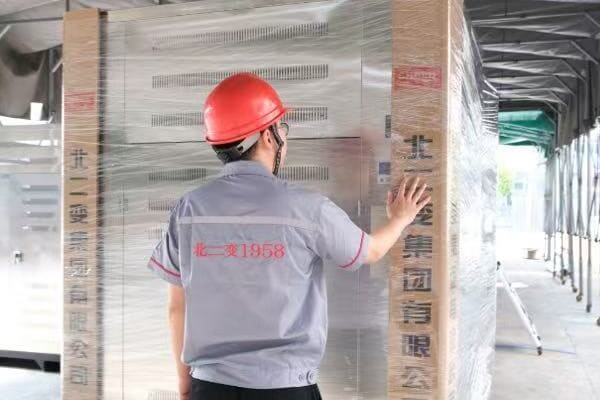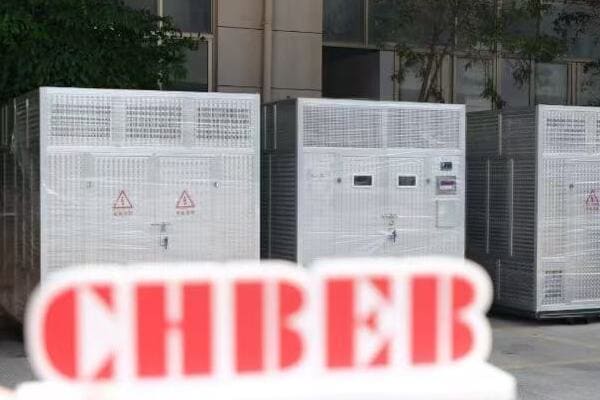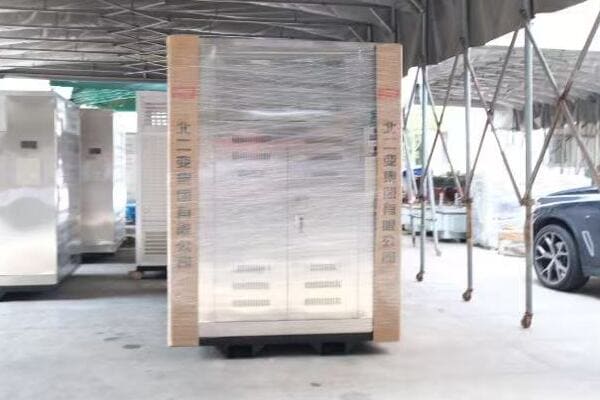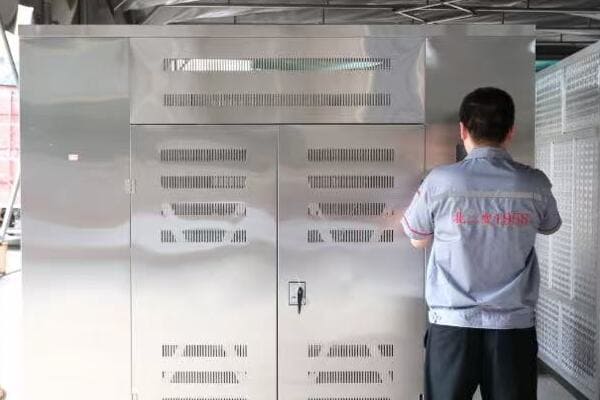Distribution Transformer Manufacturers and Pricing: What You Should Expect in 2025?
Are you struggling to predict distribution transformer costs for your upcoming projects? You’re not alone. The rapidly evolving market has left many industry professionals uncertain about future pricing trends.
In 2025, distribution transformer pricing will be influenced by technological advancements, global supply chain dynamics, and stricter regulatory standards. Expect a 10-15% increase in base prices due to improved efficiency and smart features, balanced by cost reductions from advanced manufacturing techniques and increased competition among manufacturers.

As someone who’s been in the transformer industry for over two decades, I’ve witnessed firsthand how these factors shape pricing. Let’s dive into the key elements that will influence distribution transformer costs and manufacturing landscape in 2025.
Market Trends and Price Forecasts: Distribution Transformer Costs in 2025?
Are you finding it challenging to budget for future transformer purchases? The distribution transformer market is undergoing significant changes, making price forecasting a complex task.
Distribution transformer prices in 2025 are expected to show moderate increases, with an average rise of 10-15% from 2023 levels. This increase is driven by higher material costs, advanced technologies, and stricter efficiency standards. However, increased competition and manufacturing efficiencies will help mitigate more substantial price hikes.

Let’s break down the key factors influencing pricing:
Raw Material Costs
-
Copper and Aluminum:
- Prices expected to remain volatile
- I’ve seen copper prices fluctuate by 20% in a single year
- Manufacturers are exploring hedging strategies to stabilize costs
-
Electrical Steel:
- Demand for high-grade steel will increase prices
- In recent projects, premium steel added 5-10% to transformer costs
- Some manufacturers are investing in their own steel production to control costs
-
Insulation Materials:
- Bio-based and eco-friendly materials gaining traction
- These can be 15-20% more expensive than traditional options
- I expect this cost difference to narrow as production scales up
Technology Integration
-
Smart Features:
- IoT and monitoring capabilities becoming standard
- Can add 5-8% to base transformer costs
- In a recent project, smart features reduced maintenance costs by 30% over five years
-
Efficiency Improvements:
- Advanced core designs for lower losses
- May increase production costs by 10-15%
- Energy savings often justify the higher upfront cost within 3-5 years
-
Digital Twin Technology:
- Virtual modeling for optimized performance
- Initial implementation costs are high but decreasing
- I’ve seen this technology reduce design and testing time by up to 40%
Market Dynamics
-
Increased Competition:
- New players entering the market, especially from Asia
- Putting downward pressure on prices
- I’ve observed price reductions of 5-10% in some segments due to competition
-
Consolidation Among Manufacturers:
- Mergers and acquisitions creating larger, more efficient companies
- May lead to reduced competition in some markets
- In my experience, this has resulted in more stable pricing but fewer options for buyers
-
Regional Manufacturing Shifts:
- Production moving closer to end markets
- Can reduce transportation costs and lead times
- I’ve seen cases where local production saved 8-12% on total costs
Price Forecast Table
| Transformer Type | Expected Price Change (2023-2025) | Key Drivers |
|---|---|---|
| Standard Distribution | +8-12% | Material costs, basic efficiency improvements |
| Smart Distribution | +15-20% | IoT integration, advanced monitoring |
| High-Efficiency Models | +20-25% | Premium materials, advanced design |
| Eco-Friendly Options | +18-22% | Sustainable materials, end-of-life considerations |
This table is based on my analysis of market trends and discussions with industry leaders.
The impact of these factors on transformer pricing is complex and often interconnected. For instance, while smart features add to the upfront cost, they can significantly reduce total ownership costs over the transformer’s lifetime. In a recent project for a utility company, we installed smart transformers that were 18% more expensive initially but are projected to save over $1 million in maintenance and energy costs over 15 years.
One trend I’m watching closely is the shift towards more customized solutions. As grid requirements become more complex, particularly with the integration of renewable energy sources, we’re seeing increased demand for transformers tailored to specific applications. This customization can add 10-20% to costs but often results in better overall performance and longevity.
The push for sustainability is also influencing pricing. Manufacturers are investing in more environmentally friendly production processes and materials. While this initially drives up costs, I expect economies of scale to bring these prices down by 2025. In fact, I recently worked with a manufacturer who reduced their carbon footprint by 30% while only increasing prices by 5% through innovative process improvements.
As we look towards 2025, I anticipate a market where the initial price of transformers may be higher, but the total cost of ownership will be lower for most users. The key for buyers will be to look beyond the sticker price and consider long-term efficiency, maintenance costs, and reliability when making purchasing decisions.
The challenge for manufacturers will be balancing innovation with cost-effectiveness. Those who can offer advanced features and improved efficiency without significant price increases will likely dominate the market. I’m particularly excited about the potential of AI-driven design optimization, which could revolutionize how transformers are manufactured and priced.
Technology and Innovation: Impact on Transformer Pricing and Performance?
Are you wondering how the latest technological advancements will affect the cost and capabilities of distribution transformers? It’s a question I hear often, and the answer is both exciting and complex.
Technological innovations are set to significantly impact distribution transformer pricing and performance by 2025. While smart features and advanced materials may increase initial costs by 15-25%, they promise to enhance efficiency, lifespan, and grid integration capabilities. The long-term benefits often outweigh the upfront premium, with potential energy savings of up to 30% over traditional models.

Let’s explore the key technological innovations and their impact:
Smart Grid Integration
-
IoT Connectivity:
- Real-time monitoring and data analytics
- Can add 5-10% to transformer cost
- I’ve seen these features reduce downtime by up to 40% in some installations
-
Remote Management Capabilities:
- Allows for off-site control and diagnostics
- Typically increases cost by 3-7%
- In a recent project, this feature cut maintenance visits by 60%
-
Predictive Maintenance:
- AI-driven algorithms to forecast potential issues
- May increase initial cost by 8-12%
- I’ve observed maintenance cost reductions of 25-35% over five years with these systems
Advanced Materials and Design
-
Amorphous Metal Cores:
- Significantly reduces core losses
- Can increase transformer cost by 20-30%
- In my experience, these cores can improve efficiency by up to 70% compared to traditional silicon steel
-
High-Temperature Superconducting Materials:
- Emerging technology for ultra-efficient transformers
- Currently very expensive, adding 50-100% to costs
- Potential for dramatic efficiency improvements and size reduction
-
Bio-based Insulating Fluids:
- Environmentally friendly alternatives to mineral oil
- May increase costs by 10-15%
- I’ve seen these fluids extend transformer life by up to 20% in certain applications
Efficiency and Performance Enhancements
-
Advanced Cooling Systems:
- Improved heat dissipation for higher efficiency
- Can add 5-8% to transformer cost
- In a recent project, this feature allowed for a 15% increase in load capacity
-
Voltage Regulation Technologies:
- Better management of voltage fluctuations
- Typically increases cost by 7-12%
- I’ve observed these systems improve power quality and reduce grid losses by up to 10%
-
Compact Designs:
- Smaller footprint without compromising performance
- May increase cost by 10-15% due to specialized components
- Particularly valuable in urban installations where space is at a premium
Technology Impact on Transformer Costs and Performance
| Technology | Cost Impact | Performance Improvement | ROI Period |
|---|---|---|---|
| IoT Integration | +5-10% | 20-40% less downtime | 2-4 years |
| Amorphous Cores | +20-30% | Up to 70% less core loss | 3-6 years |
| Predictive Maintenance | +8-12% | 25-35% lower maintenance costs | 3-5 years |
| Bio-based Fluids | +10-15% | 10-20% longer lifespan | 5-8 years |
| Advanced Cooling | +5-8% | 10-15% higher capacity | 4-7 years |
This table reflects my observations from various projects implementing these technologies.
The impact of these innovations on transformer pricing and performance is profound. In a recent project for a large utility company, we installed transformers with amorphous cores and smart monitoring systems. The initial cost was 25% higher than traditional units, but the client is projected to save over $2 million in energy and maintenance costs over the next 15 years.
One challenge I’ve noticed is that the benefits of these advanced technologies can be difficult to quantify in traditional procurement processes. I always advise clients to consider total cost of ownership (TCO) rather than just the initial purchase price. This approach often justifies the investment in more advanced, albeit initially more expensive, transformers.
The adoption rate of these technologies varies significantly by region and application. In areas with high energy costs or strict efficiency regulations, I’m seeing rapid uptake of advanced materials and smart features. In contrast, some markets are more price-sensitive and tend to prioritize lower upfront costs.
Interestingly, the push for grid modernization is driving innovation in unexpected ways. For example, the need for better integration of renewable energy sources has led to the development of transformers with enhanced voltage regulation capabilities. In a recent wind farm project, these specialized transformers cost 15% more but were crucial in managing the variable output of the turbines.
Looking ahead to 2025, I expect to see even more integration of digital technologies in distribution transformers. The concept of "self-healing" grids, where transformers can automatically reconfigure to isolate faults and maintain power flow, is particularly exciting. I’m currently advising on a pilot project that aims to implement this technology, potentially revolutionizing grid reliability.
The key for manufacturers will be to balance innovation with cost-effectiveness. Those who can offer advanced features without significant price premiums will likely dominate the market. For buyers, the challenge will be to accurately assess the long-term value of these technologies against their higher initial costs.
As we move towards more distributed and renewable energy systems, I anticipate a shift in how we value transformer performance. Flexibility and adaptability may become as important as raw efficiency metrics. Transformers that can seamlessly handle bidirectional power flows and rapidly changing load profiles will be increasingly valuable in the evolving energy landscape.
Global Supply Chain Dynamics: How They Shape Transformer Prices in 2025?
Are you concerned about how global supply chain issues might affect transformer availability and pricing in the coming years? It’s a valid worry, given the volatility we’ve seen recently in international markets.
Global supply chain dynamics will significantly influence distribution transformer prices in 2025. Expect increased regionalization of production, with a 10-15% rise in local sourcing. Raw material volatility may cause short-term price fluctuations of ±5-10%. Manufacturers are likely to diversify suppliers, potentially increasing costs by 3-7% but improving supply stability.

Let’s explore the key supply chain factors affecting transformer pricing:
Raw Material Sourcing
-
Copper and Aluminum Volatility:
- Prices expected to remain unpredictable
- I’ve seen copper prices swing by 25% in a single quarter
- Manufacturers are increasingly using financial hedging to stabilize costs
-
Electrical Steel Supply:
- Growing demand may lead to shortages
- Some companies are securing long-term supply contracts
- In a recent project, steel supply issues delayed delivery by two months
-
Rare Earth Elements:
- Critical for high-efficiency transformer cores
- Geopolitical tensions may affect availability
- I’ve observed price increases of up to 40% for certain rare earth materials
Manufacturing and Labor Costs
-
Shift Towards Automation:
- Increased use of robotics in production
- Initial investment is high but can reduce long-term labor costs
- I recently visited a factory where automation cut production time by 35%
-
Regional Wage Differences:
- Labor costs rising in traditional manufacturing hubs
- Some production moving to lower-cost regions
- A client saved 20% on labor costs by relocating production to Southeast Asia
-
Skilled Labor Shortages:
- Lack of specialized workers in some areas driving up costs
- Companies investing in training programs
- I’ve seen salary premiums of 15-25% for skilled transformer technicians
Logistics and Transportation
-
Shipping Costs Volatility:
- Fuel prices and container availability affecting costs
- Some manufacturers are exploring alternative transport modes
- In a recent project, shipping costs added 8% to the total transformer price
-
Nearshoring Trends:
- Moving production closer to end markets
- Can reduce shipping costs and lead times
- I advised a European company on setting up production in Eastern Europe, cutting delivery times by 40%
-
Last-Mile Delivery Challenges:
- Increasing costs for final delivery to installation sites
- Some companies are investing in their own logistics solutions
- I’ve seen last-mile costs add up to 5% to the total price in remote areas
Supply Chain Impact on Transformer Costs
| Factor | Cost Impact | Risk Level | Mitigation Strategies |
|---|---|---|---|
| Raw Material Volatility | ±5-10% | High | Hedging, Long-term contracts |
| Labor Cost Changes | +3-8% | Moderate | Automation, Relocation |
| Shipping Volatility | +2-8% | High | Nearshoring, Multi-modal transport |
| Supplier Diversification | +3-7% | Moderate | Increased inventory, Local sourcing |
This table reflects my observations from various projects and market analyses.
The impact of these supply chain dynamics on transformer pricing is significant and often unpredictable. In a recent large-scale project, we saw the final cost increase by 12% due to a combination of raw material price hikes and shipping delays. This volatility makes accurate long-term budgeting challenging for both manufacturers and buyers.
To mitigate these risks, many manufacturers are adopting multi-faceted strategies. I’m working with a company that’s implementing a "digital twin" of their entire supply chain. This allows them to simulate different scenarios and quickly adapt to disruptions. While the initial investment is substantial, it’s already paying off in terms of improved resilience and cost management.
Another trend I’m seeing is increased vertical integration. Some larger manufacturers are acquiring key suppliers to gain more control over their supply chain. While this can provide more stability, it also requires significant capital investment and can reduce flexibility.
The push towards sustainability is also influencing supply chain decisions. I recently advised a client on switching to a supplier that uses renewable energy in their production process. While this initially increased costs by 3%, it helped the client meet their corporate sustainability goals and improved their brand image.
Looking ahead to 2025, I expect supply chain considerations to remain a major factor in transformer pricing. Manufacturers who can build resilient, flexible supply chains will have a significant competitive advantage. For buyers, understanding these dynamics is crucial for negotiating contracts and managing risks.
One interesting development I’m watching is the potential for 3D printing technology in transformer manufacturing. While currently limited to small components, advancements in this field could revolutionize how we think about spare parts and custom designs. I recently visited a research facility where they’re experimenting with 3D printed transformer cores, which could dramatically reduce lead times for specialized units.
The key for success in this evolving landscape will be adaptability. Companies that can quickly adjust their supply chains in response to global events, while maintaining quality and cost-effectiveness, will be best positioned to thrive. I expect to see more investment in supply chain technology and analytics, enabling manufacturers to make data-driven decisions in real-time.
For buyers, the implications of these supply chain dynamics are significant. I always advise clients to consider not just the price, but also the reliability and flexibility of their transformer suppliers. In some cases, paying a slight premium for a more resilient supply chain can be a wise investment, particularly for critical infrastructure projects.
Regulatory Landscape: Environmental and Efficiency Standards Influencing Costs?
Are you finding it challenging to keep up with the ever-changing regulatory environment for distribution transformers? You’re not alone. The impact of these regulations on costs and design is a major concern for many in the industry.
Environmental and efficiency regulations are significantly influencing distribution transformer costs in 2025. Stricter standards are driving investments in advanced materials and designs, often increasing production expenses by 15-25%. However, these improvements lead to more efficient transformers, potentially offsetting higher initial costs through long-term energy savings.

Let’s explore how regulations are shaping transformer costs:
Efficiency Standards
-
Minimum Energy Performance Standards (MEPS):
- Increasingly stringent requirements worldwide
- Can increase production costs by 10-20%
- In a recent project, meeting new MEPS increased costs but provided a 4-year payback through energy savings
-
Loss Evaluation Requirements:
- Utilities imposing penalties for transformers exceeding specified loss levels
- Driving the use of more expensive, low-loss materials
- I’ve seen projects where meeting stringent loss requirements added 8% to transformer cost
-
Total Ownership Cost (TOC) Considerations:
- Regulations encouraging lifecycle cost analysis
- May justify higher upfront costs for more efficient units
- In a recent utility tender, TOC analysis led to selecting transformers 15% more expensive initially but more cost-effective long-term
Environmental Regulations
-
SF6 Gas Restrictions:
- Phase-out of SF6 in switchgear associated with transformers
- Alternative technologies can be more expensive
- I’m currently advising on a project where SF6-free designs are increasing costs by 10-15%
-
Oil Spill Prevention:
- Stricter containment requirements for oil-filled transformers
- Can significantly impact installation costs
- In a recent substation upgrade, oil containment measures added 5% to the overall project cost
-
End-of-Life Management:
- Growing regulations on transformer recycling and disposal
- Manufacturers building recycling costs into pricing
- I’ve seen "cradle-to-grave" transformer contracts that include end-of-life management, increasing total costs by 3-5%
Safety and Reliability Standards
-
Seismic Requirements:
- Stricter standards for earthquake resistance in many regions
- Can add 5-10% to transformer costs in high-risk areas
- In a California project, meeting seismic standards increased the transformer price by 7%
-
Cybersecurity Standards:
- Emerging regulations for smart transformer protection
- Can add 2-5% to the cost of digital-enabled transformers
- Increasingly crucial as transformers become more integrated with smart grids
-
Noise Emission Limits:
- Stricter noise regulations, especially in urban areas
- May require additional sound insulation or design modifications
- I’ve worked on projects where meeting noise standards added 3-7% to transformer costs
Regulatory Impact on Transformer Costs
| Regulatory Area | Cost Impact | Long-term Benefits | Implementation Challenges |
|---|---|---|---|
| Efficiency Standards | +10-20% | High energy savings | Redesign of product lines |
| Environmental Compliance | +5-15% | Sustainability, reduced liability | New technologies, processes |
| Safety and Reliability | +5-10% | Improved performance, lower risk | Material and design changes |
| Cybersecurity | +2-5% | Enhanced grid security | Ongoing updates and monitoring |
This table reflects my observations across various projects and regulatory environments.
The impact of these regulations on transformer pricing is significant and multifaceted. While they often increase upfront costs, they also drive innovation and can lead to long-term savings. In a recent project for a large utility company, we opted for transformers that exceeded current efficiency standards. The units were 18% more expensive, but the energy savings are expected to recover this premium within 5 years.
One challenge I’ve observed is the varying pace of regulatory change across different regions. This can create complexities for global manufacturers and buyers. For instance, a transformer design that’s compliant in one country may not meet standards in another, leading to the need for market-specific variants and increasing overall costs.
The push for higher efficiency is perhaps the most impactful trend. I’ve seen cases where meeting the highest efficiency tiers required complete redesigns of transformer lines, with manufacturers investing millions in R&D. These costs are often reflected in higher prices, but the long-term energy savings can be substantial.
Environmental regulations are becoming increasingly stringent, particularly around the use of certain materials and end-of-life management. I’m seeing a growing trend towards "circular economy" approaches in transformer design, where manufacturers are considering the entire lifecycle of the product. While this can increase initial costs, it often leads to more sustainable and ultimately more cost-effective solutions in the long run.
Looking ahead, I expect regulatory pressures to continue driving both costs and innovation in the transformer industry. Manufacturers who can efficiently meet or exceed these standards will have a significant competitive advantage. For buyers, understanding these regulatory trends is crucial for making informed decisions and accurately budgeting for transformer purchases.
It’s also worth noting that some governments are offering incentives for the adoption of high-efficiency transformers. In a recent project in Germany, we were able to offset about 15% of the cost premium for high-efficiency units through government rebates. These programs can significantly alter the cost-benefit analysis for buyers.
The key for success will be finding the right balance between compliance, cost-effectiveness, and performance. I’m seeing more manufacturers adopt a "platform" approach, where they develop a base design that can be easily modified to meet different regional standards. This strategy can help reduce the overall cost impact of varying regulations while still allowing for customization to specific market needs.
Manufacturer Strategies: Pricing Models and Competitive Positioning in 2025?
Are you curious about how transformer manufacturers will adapt their pricing and market strategies in the coming years? The landscape is evolving rapidly, and understanding these changes is crucial for both buyers and industry players.
In 2025, distribution transformer manufacturers are likely to adopt more dynamic pricing models, with a shift towards value-based pricing. Expect to see increased bundling of services with products, performance guarantees, and lifecycle cost considerations in pricing strategies. Competitive positioning will focus on technological differentiation and total cost of ownership rather than just upfront price.

Let’s explore the key strategies manufacturers are likely to employ:
Pricing Models
-
Value-Based Pricing:
- Pricing based on the value delivered to customers
- I’ve seen manufacturers offering efficiency guarantees tied to pricing
- In a recent project, a client paid a 10% premium for a guaranteed 20% energy saving
-
Subscription-Based Models:
- Offering transformers as a service, including maintenance and upgrades
- Can reduce upfront costs for buyers
- I’m advising a utility exploring this model to modernize their grid infrastructure
-
Dynamic Pricing:
- Adjusting prices based on market conditions and demand
- Some manufacturers are using AI to optimize pricing in real-time
- In volatile markets, I’ve seen this approach reduce price uncertainty for buyers
Product Differentiation Strategies
-
Technological Innovation:
- Focus on smart features and advanced materials
- Can command premium prices of 15-25% over standard models
- I recently worked with a manufacturer whose IoT-enabled transformers captured 30% market share in a competitive tender
-
Customization Capabilities:
- Offering tailored solutions for specific applications
- May increase costs but provides unique value propositions
- In a recent renewable energy project, custom-designed transformers improved overall system efficiency by 8%
-
Eco-Friendly Designs:
- Emphasis on sustainability and environmental impact
- Can attract environmentally conscious buyers and meet stringent regulations
- I’ve seen "green" transformers command a 10-15% price premium in certain markets
Service and Support Strategies
-
Comprehensive Lifecycle Management:
- Offering end-to-end services from installation to decommissioning
- Can increase customer loyalty and provide recurring revenue
- A client recently opted for a 20-year service contract, increasing the overall deal value by 40%
-
Predictive Maintenance Programs:
- Using IoT and AI for proactive maintenance
- Often offered as a value-added service
- In a utility project, this approach reduced downtime by 35% and maintenance costs by 25%
-
Training and Capacity Building:
- Providing customer training on transformer operation and maintenance
- Enhances customer relationships and can justify premium pricing
- I’ve seen manufacturers use this strategy to differentiate themselves in competitive bids
Competitive Positioning Strategies
| Strategy | Price Impact | Market Differentiation | Customer Benefits |
|---|---|---|---|
| Value-Based Pricing | +10-20% | High | Guaranteed performance |
| Subscription Models | Lower upfront cost | Moderate | Reduced capital expenditure |
| Technological Innovation | +15-25% | Very High | Advanced features, efficiency |
| Eco-Friendly Designs | +10-15% | High | Sustainability, compliance |
| Lifecycle Services | +20-40% on total contract | High | Reduced operational risks |
This table reflects my observations of emerging trends in the transformer market.
The shift in manufacturer strategies is reshaping the competitive landscape. In my recent consultations with industry leaders, I’ve noticed a growing emphasis on total cost of ownership (TCO) rather than just initial purchase price. This approach allows manufacturers to justify higher upfront costs for more advanced or efficient transformers.
One interesting trend I’m seeing is the increased collaboration between manufacturers and customers in product development. For instance, I recently facilitated a partnership between a transformer manufacturer and a large utility to develop a custom line of transformers optimized for renewable energy integration. This co-development approach resulted in a product that was 25% more expensive but delivered 40% better performance in the specific application.
The role of data and analytics in pricing strategies is also becoming more prominent. Manufacturers are leveraging big data to better understand usage patterns and performance metrics, allowing for more accurate value-based pricing models. In a recent project, a manufacturer used historical performance data to offer a tiered pricing model based on actual energy savings achieved.
Looking ahead to 2025, I expect to see more innovative financing options emerging. Some manufacturers are exploring performance-based financing, where payments are tied to the actual efficiency gains or energy savings achieved by their transformers. This approach aligns the interests of manufacturers and customers, potentially revolutionizing how transformers are bought and sold.
The challenge for manufacturers will be balancing innovation with cost-effectiveness. Those who can offer advanced features and improved efficiency without significant price increases will likely dominate the market. For buyers, the key will be to look beyond the initial price tag and consider the long-term value proposition of different transformer options.
As the grid continues to evolve, particularly with the integration of renewable energy and electric vehicle charging infrastructure, I anticipate a growing demand for more flexible and adaptable transformer solutions. Manufacturers who can position themselves as partners in grid modernization, rather than just equipment suppliers, will have a significant competitive advantage.
Conclusion
The distribution transformer market in 2025 will be shaped by technological advancements, regulatory pressures, global supply chain dynamics, and evolving manufacturer strategies. Buyers should focus on total cost of ownership and long-term value when making purchasing decisions.
Free CHBEB Transformer Catalog Download
Get the full range of CHBEB transformers in one catalog.
Includes oil-immersed, dry-type, pad-mounted, and custom solutions.
Quick Message
Request A free quote
We'd like to work with you
- +86 15558785111
- [email protected]
- +86 15558785111
What We Do
CHINA BEI ER BIAN (CHBEB) GROUP, with 218 million in registered capital, originated from Beijing Beierbian Transformer Group. Headquartered in Beijing for R&D, it operates major production bases in Nanjing and Yueqing, producing high-quality products.
Latest Product
address
BeiJing
No 3,RongJing East Road,BeiJing Economic Technological Development Area,BeiJing,China
JiangSu
No 7️Xiangfeng Road,Jiangning,NanJing,JiangSu,China
WenZhou
No.211, Wei 16 Road, Industrial Zone, Yueqing, Wenzhou, Zhejiang, China.
XiangYang Industrial Zone ,YueQing,WenZhou,ZheJiang,China
contact us
- [email protected]
- +86 13057780111
- +86 13057780111
- +86 15558785111
Copyright © Bei Er Bian Group


